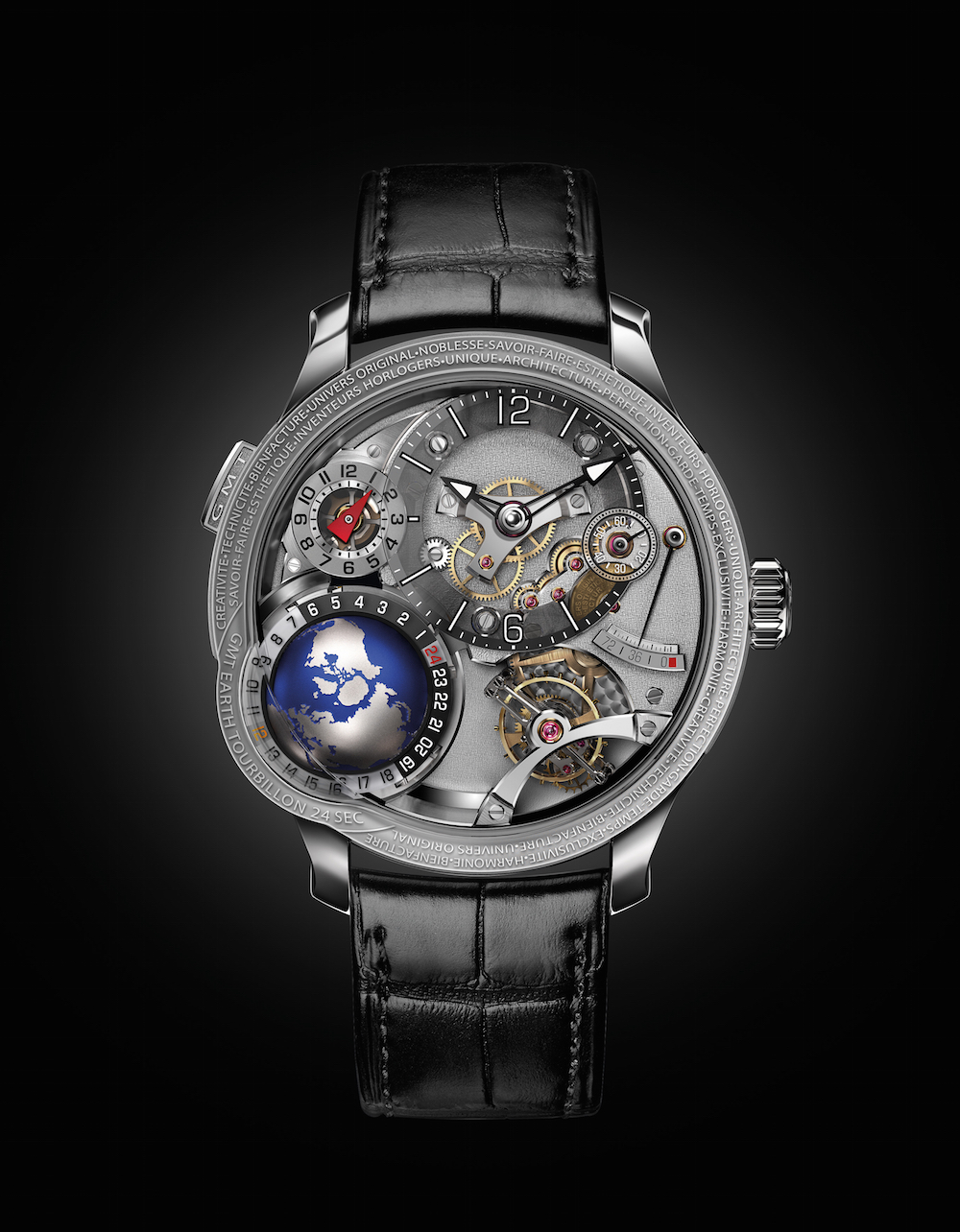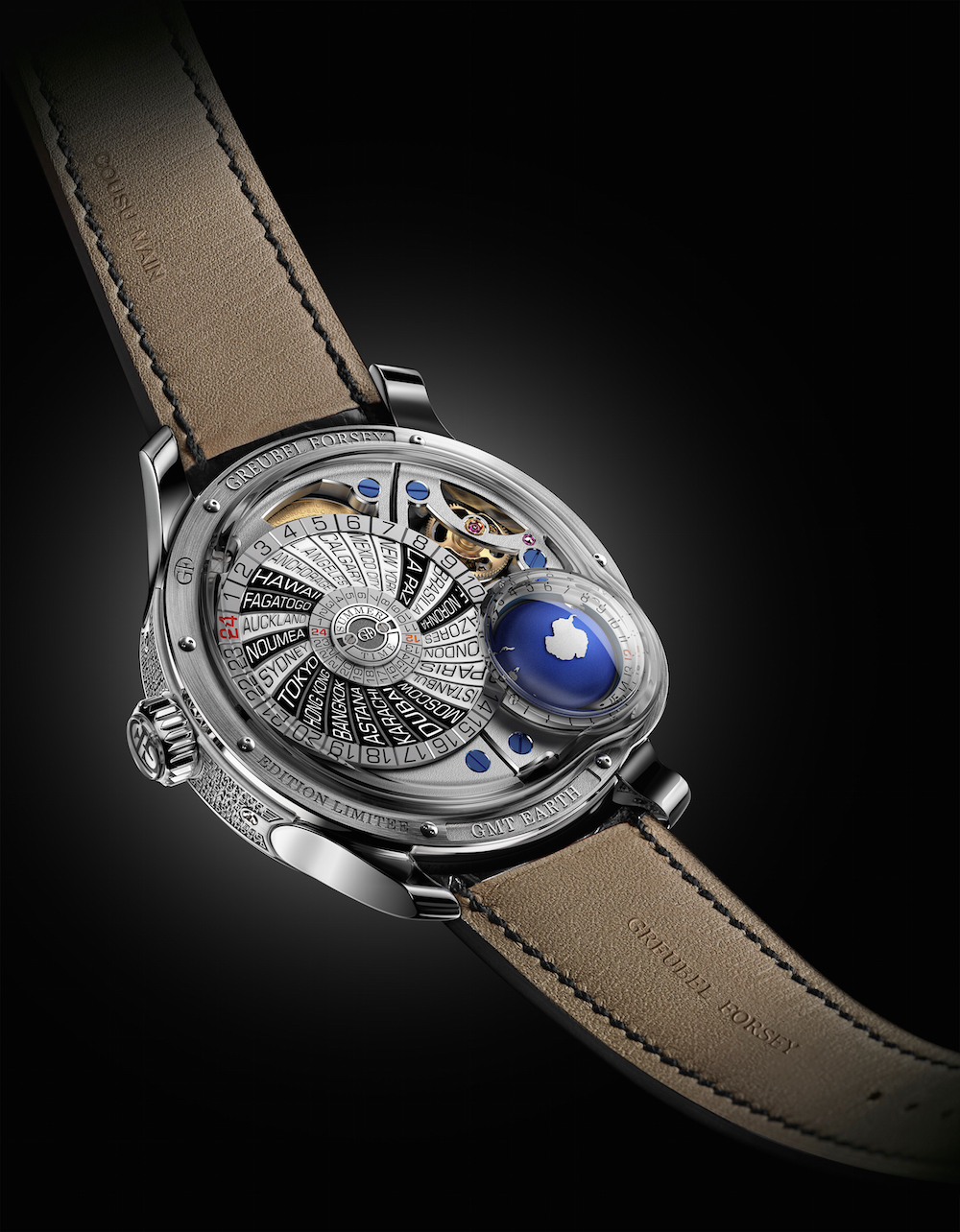SIHH 2018: Greubel Forsey
May 01, 2018

Although the big news at Geneva this year was the introduction of more accessible collections (read: lower price points), there were still many new highly complicated and wildly expensive timepieces that left plenty to the imagination.
Boutique ultra-high-end watch brand Greubel Forsey is among the elite that cater to those for whom money is no object. Founders Robert Greubel and Stephen Forsey are well known in the world of horology. Their watches are highly respected by connoisseurs because of the extroverted aesthetics, exclusive innovations and unsurpassed craftsmanship. The brand’s exacting approach to traditional hand-finishing techniques also makes its timepieces unique, so any new watch Greubel Forsey debuts is major news for collectors.
Since its inception in 2004, Greubel Forsey has made a surprising impact on the watchmaking world despite being a small brand. It produces only around 100 pieces each year. None of the watches come cheap; their retail price normally starts at about US$300,000. In Geneva, Greubel Forsey showcased three new pieces – the Différentiel d’Égalité, the GMT Earth and the Double Balancier. Only the Différentiel d’Égalité can be considered a completely new arrival; the other two are updated iterations of watches that already existed in the collections.
Back in 2008, Greubel Forsey announced that it had created a new constant force mechanism, which it dubbed the “Différentiel d’Égalité”, marking the fifth invention by the duo. Without getting too technical, basically it enables steady distribution of power from the mainspring barrel to the regulating organ. As a result, the new Différentiel d’Égalité now keeps precise time throughout its 60-hour power reserve.
Another first for the brand is the incorporation of a dead-beat seconds complication into the Différentiel d’Égalité; the seconds reset is activated by pulling the crown. A “dead-beat” timepiece shows the second hand ticking precisely once every second. It’s one of those wonderful complications that appears much simpler than it really is.
Like most Greubel Forsey models, the Différentiel d’Égalité is a pretty big watch. Its case measures 44mm in diameter and is 15.3mm thick. The dial features the main hour and minute hands in the centre, a seconds dial between 4 and 5 o’clock, and a power reserve indicator at 1 o’clock. There’s a large cut-out at the bottom left showing off the constant-force mechanism as well as the dead-beat seconds complication. The latter can also be viewed through the back. A high-domed sapphire crystal protects the dial.
The manually wound movement consists of 359 parts, and is exquisitely finished with frosted main plates and bridges, polished bevels and jewel countersinks, and relief engraving on components such as the barrels. Every single one of the hundreds of parts in the watch is finished by hand. This watch is limited to 33 pieces. Another impressive timepiece introduced is the GMT Earth. This is an updated version of the GMT, which was launched in 2011. Aficionados will tell you that a watch with world maps and other gimmicks is nothing new – but if it features in a Greubel Forsey watch, then that’s another story entirely. In GMT Earth’s case, the brand has taken global timekeeping to another level. While it may seem identical to its predecessor, the construction has been totally revamped; the latest version brings a new dial treatment, a new case decoration and more. This is a busy-looking watch that may have many people staring at its intricate mechanical microcosm, leaving them spellbound. However, the real reason people fawn over it is the rotating three-dimensional titanium-engraved globe, which previously only revealed its upper half. Now you can marvel in its full glory from the North Pole to the South, on the dial, through the caseband and even through a domed section of the caseback. Revealing the entire terrestrial globe requires the complex application of sapphire crystal, which Greubel Forsey achieved over many years of painstaking research and practice.
Time is displayed on an off-centre dial and to the left is a sub-dial that tells time in a second time zone. The spinning globe is positioned below the sub-dial, at 7 o’clock, alongside the 24 seconds tourbillon (the third pivotal invention by the brand) and the power reserve indicator at the bottom right corner. The rotating globe can be used to roughly tell the time anywhere in the world.
In short, the GMT Earth enables a clear view of three time zones simultaneously to within a quarter of an hour. Furthermore, on the back of the timepiece, there’s a world time disk, which takes into account Daylight Saving Time. This 45.5mm white gold timepiece has a power reserve of 72 hours and is also limited to 33 pieces.

And then there’s the Double Balancier. This is a lovely piece that was first introduced in white gold with a silvered gold dial. This year, it’s been revamped in a 43mm case in 5N red gold with a black gold and enamel dial. Instead of a tourbillon, it uses two inclined balanced wheels that are coupled to the différentiel sphérique constant, a gear system invented by Greubel Forsey to provide steadier amplitude, which means more precise timekeeping. Aesthetically, this timepiece catches the eye because it exposes the heart of the mechanism. It also stands out by virtue of the attention paid to its finishing.
Greubel Forsey timepieces may appear too complicated and the technicalities involved in their creation too difficult to understand for the novice. For the uninitiated, however, the bottom line is that they’re ultra-high-end watches, designed to excel at a premium cost and made in the tireless pursuit of perfection in each and every detail, no matter how small.




























